We urge our clients to be vigilant as we have seen several new cases of laminitis in the past week
LAMINITIS ALERT
With the recent change in weather and lush grass growth, we have recently seen a sharp increase in new cases of laminitis, with several horses currently undergoing treatment with our vets.
If you suspect laminitis call us immediately on 01737 246109.
Laminitis is a medical emergency, the faster we act the better the chance of a successful outcome.
Laminitis is inflammation of the laminae, structures within the horse’s feed which act to suspend to pedal bone in the hoof capsule. There are two main layers which interlink, much like velcro. Inflammation can occur for a number of reasons, resulting in physical disruption to the interlinking fibres. This may be tearing, or in some cases complete breaking apart. This can result in rotation of the pedal bone toward the floor, and also sinking of the bone.
– Lameness, often sudden, often both front feet (although can affect all feet)
– Lameness often worse on hard ground, or when turning in a tight circle
– Horse leaning back on its heels, trying to relieve pressure from the front of the foot
– Shifting weight from foot to foot when resting
– Increased digital pulses
In basic terms, there are 3 types of causes:
1. Endocrine/Hormone diseases – Equine Cushing’s Disease (PPID) and Equine Metabolic Syndrome (EMS). These hugely increase the risk of laminitis if uncontrolled. By causing problems with blood insulin and glucose control, a sudden meal of lush sugary grass causes even bigger problems.
Research has shown that 90% of laminitis cases have an underlying endocrine disease.
2. Mechanical overload – usually this affects one foot, and is as result of the other leg having an orthopaedic problem. For instance, supporting limb laminitis developing as a result of one limb being in cast (e.g. for a broken bone), causing additional strain to be taken by the opposite limb, this opposite limb developing laminitis.
3. Diseases where severe inflammation is involved – Retained placenta, severe colic, severe pneumonia, diarrhoea.
If your horse has not been diagnosed with Cushing’s Disease (PPID) before, we are offering a free blood test*, get in touch to discuss. Why not schedule this for a zone visit, with a £10 visit fee.
What is Laminitis and where do EMS and PPID fit in? from Boehringer Ingelheim on Vimeo.
Monitoring body weight is a tricky task, we recommend using a combination of accurate bodyweight readings obtained by weigh bridge and body condition scoring.
If you’re unsure if your horse is overweight, take a look at the guide from Bailey’s Horse Feeds – if you would like paper copies or need help with managing your horse’s weight please don’t hesitate to get in touch with us. We are always happy to discuss preventative healthcare.
In the first instance, the focus on treatment is on providing analgesia (pain relief) and foot support.
Vets may provide Non-Steroidal Anti-Inflammatories (NSAIDs), as well as other forms of pain relieving medications. Supporting the foot acts to prevent further movement of the pedal bone, and provides pain relief. This may take the form of a deep bed, solar supports including foam and styrofoam pads.
We will also advise strict box-rest, with diet changes including no grass access. We recommend initially providing hay soaked for at least 8-12 hours prior to feeding, this reduces the sugar and overall calorie content.
If we suspect an underlying endocrine disease (90% of laminitis cases are due to one), we will also recommend testing and/or treating accordingly.
Download the new laminitis checklist, to make sure you aren’t missing the subtle signs. You can print and take to the yard, or complete on your smart phone and email us at admin@gvgbrooksequine.co.uk to discuss your findings.
Worried your horse may have Equine Cushing’s Disease? Download the new cushings checklist to ensure you’ve not missed the early symptoms.
Prevention is better than cure, we urge you to get in touch with us to discuss any concerns before laminitis occurs.
